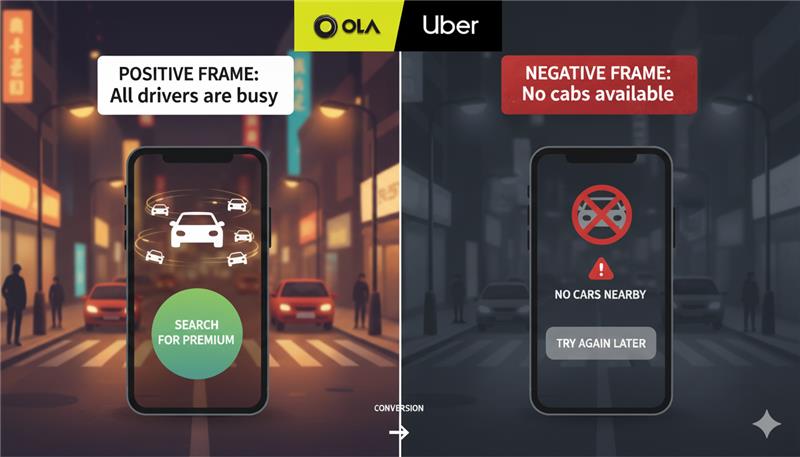The UX Law of Framing: How Positive and Negative Messaging Affects User Conversion
Introduction
Small word choices in UX design can significantly affect how users behave. The Law of Framing is one of the most potent psychological concepts underlying this.
The presentation of information is referred to as framing. The framing, whether favorable or unfavorable, affects how people see and respond to the facts, which stay the same.
The Classic Experiment: 75% Lean vs. 25% Fat

The identical meat was served to two sets of volunteers in a well-known study.
- Group 1: Told it was 75% lean
- Group 2: Told it was 25% fat
The results were striking:
- Group 1 rated the meat 8/10
- Group 2 rated it 2/10
The product was identical. The difference came purely from framing.
Why Framing is Effective: The Psychology Behind It
Framing is tied to loss aversion, a concept from behavioral economics.
- People are roughly twice as sensitive to losses as they are to equivalent gains (Kahneman & Tversky, Prospect Theory).
- Positive framing fosters trust and gives users hope.
- By drawing attention to possible losses, negative framing generates urgency.
1. E-commerce Promotions

- Positive frame: Save 25% on all purchases
- Negative frame: Don’t lose your 25% discount
2. Video Thumbnails (YouTube Context)

- Case 1: Earn ₹10,000/month with this skill
- Case 2: You’re losing ₹10,000 every month without this skill
3. Blinkit (Delivery Apps)

- Negative frame: We don’t have delivery guys right now
- Positive frame: All our delivery partners are busy
4. Ola/Uber

- Negative frame: No cabs available
- Positive frame: All drivers are busy
The Experiment: Two Groups, Two Mindsets
Applications in UI/UX Writing
Product teams and designers can use framing in a variety of contexts:
- CTA Buttons:
“Claim my discount” vs. “Don’t miss my discount.” - Empty States:
“No items found” vs. “Start adding your favorites!” - Notifications:
“Your subscription ends tomorrow” vs. “Renew now to keep your benefits.”
Key Takeaways
- Framing changes perception without changing facts.
- Loss aversion is powerful — when it comes to motivating action, negative framing frequently works better than positive framing.
- Balance is important. Positive framing fosters enduring brand loyalty, while excessive use of negative framing undermines trust.
- In UX, words are design. Microcopy influences user choices; it is not ornamentation.
Conclusion
According to the Law of Framing, a few words can make the difference between conversion and drop-off.
When writing a button, notice, or empty state, consider whether you are framing the message to encourage the user to continue.
Because sometimes, the frame is the product.
When writing a button, notice, or empty state, consider whether you are framing the message to encourage the user to continue.
Because sometimes, the frame is the product.